Hello, this is Tim Langeman, creator of CiteIt.net
- a higher standard of citation
- for news organizations, academics, and web authors.
This page contains a copy of the John F. Kennedy Inauguration Wikipedia article, along with the CiteIt.net javascript that this page uses to demonstrate the concept of contextual citations.
The Problem:
Often times when I’m reading a quotation, I think to myself:
That’s a nice-sounding quote, but I wonder what it said 2 sentences prior or 2 sentences after the quote .

In other words — what’s the context of this quote and how do I know this quote isn’t being cherry-picked?
Example:
Let’s look at an example of a cherry-picked quotation by Thomas Jefferson which is etched into the wall of the Jefferson Memorial in Washington DC :
Nothing is more certainly written in the book of fate than that these people are to be free.
At first impression, this sounds like a great patriotic quote that the country’s leadership could rightly etch onto the marble wall of a national monument to proclaim the righteousness of its conception.
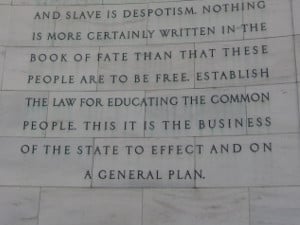
But if you click on the blue arrow below the quote, you will see the quote expand, displaying the 500 characters that follow.
It reads:
Nor is it less certain that the two races, equally free, cannot live in the same government. Nature, habit, opinion has drawn indelible lines of distinction between them. It is still in our power to direct the process of emancipation and deportation peaceably and in such slow degree as that the evil will wear off insensibly, and their place be pari passu filled up by free white laborers.
Upon further research, one can learn that this panel from the Jefferson Memorial is a compilation of excerpts rather than a single quotation.
But it is not just cherry-picked quotations that benefit from greater context. Many times a quote will take on greater meaning when the full context is understood.

Harvard Professor Laurel Thatcher Ulrich‘s comment that Well-behaved women seldom make history
makes more sense if the reader has an easy way to inspect the context from her 1976 article from American Quarterly. (click the blue-grey link)
Two types of Contextual Citations:
I’ve just demonstrated the two types of contextual citations
- Blockquote with expanding arrows
- Inline Popup (blue-grey-styled link)
Bring Contextual Citations to Wikipedia:
So back to our Wikipedia page on the Inauguration of JFK ..
If you scroll down to the very bottom of this page, you will see an extended quotation with blue arrows above and below. Click on one of the arrows to expand the quotation.
This is the only expanding blockquote in the example, but there are numerous blue-grey contextual popups.
Goal: Ubiquity
I’ve developed the CiteIt.net app with the hope that contextual citation can become ubiquitous and raise the social norms and quality of media.
And just like Wikipedia has developed a standard notation that says: “citation needed“, I’ve tentatively developed a playful little jingle
So, whenever someone makes a claim without any evidence (cwae) , you can playfully sing the CiteIt.net jingle to them:
Can you CiteIt? Can you CiteIt?
Next Steps
You can learn more about technical details behind the CiteIt.net contextual quotation system by:
- Reading more about this Video
- Downloading the Sample Code and Viewing the Developer Video
- Test-Driving the WordPress plugin on the Demo Site
- Reading the Proposal for incorporating Contextual Citations into Wikipedia
How it works:
So how does the citation system work?
1. Markup the URL:
The first step a Wikipedia author needs to do is mark up their quote by adding the source’s URL using the blockquote “cite” attribute, like this:
<blockquote cite="https://www.vanityfair.com/news/2011/02/kennedy-201102?currentPage=all">
O'Neill recalled that Kara had nudged him and said ..
</blockquote>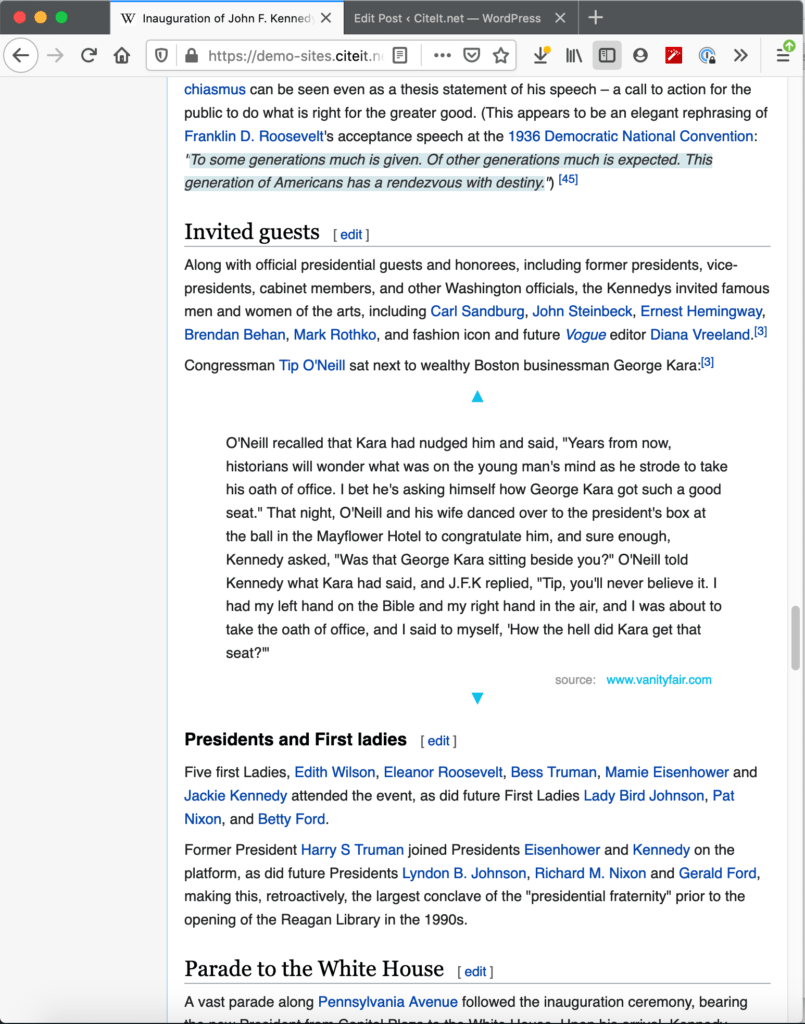
2. Publish the Article, with citation markup
- If using the CiteIt.net WordPress Plugin, the plugin will automatically take care of steps 3 and 4
- MediaWiki could be similarly modified to notify the CiteIte.net api that a new contextual JSON file should be generated for each citation whenever an article is published or updated.
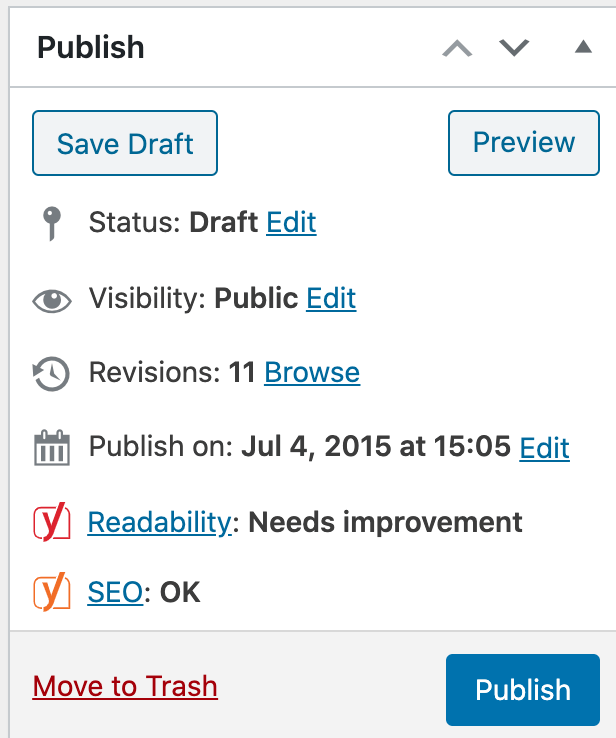
3. Get the Article’s URL
Example:
https://en.wikipedia.org/wiki/Inauguration_of_John_F._Kennedy4. Notify the API service that a new citation was published:
When the author publishes their article, the software they use — in this case MediaWiki — contacts the CiteIt.net web service with the URL of the article they just cited. (HTTP POST preferred)

https://api.citeit.net/?url=https://en.wikipedia.org/wiki/Inauguration_of_John_F._Kennedy
5. API Retrieves newly published article:

The web service retrieves the author’s article and looks for all the quotes within the article that have a “cite” attribute containing a URL
Quotes on the demo JFK article with a Cite attribute:
- “
The happy relationship between the arts and politics which has characterized our long history I think reached culmination tonight.
“ - “
I’ve never taken the view the world of politics and the world of poetry are so far apart. I think politicians and poets share at least one thing, and that is their greatness depends upon the courage with which they face the challenges of life.
“ man holds in his mortal hands the power to abolish all forms of human poverty and all forms of human life
,”- “
In the long history of the world, only a few generations have been granted the role of defending freedom in its hour of maximum danger
,” To some generations much is given. Of other generations much is expected. This generation of Americans has a rendezvous with destiny.
“- O’Neill recalled that Kara had nudged him and said, “Years from now, historians will wonder what was on the young man’s mind as he strode to take his oath of office. I bet he’s asking himself how George Kara got such a good seat.” That night, O’Neill and his wife danced over to the president’s box at the ball in the Mayflower Hotel to congratulate him, and sure enough, Kennedy asked, “Was that George Kara sitting beside you?” O’Neill told Kennedy what Kara had said, and J.F.K replied, “Tip, you’ll never believe it. I had my left hand on the Bible and my right hand in the air, and I was about to take the oath of office, and I said to myself, ‘How the hell did Kara get that seat?'”
Web service looks up quote sources:
The web service then looks up the source URL of each citation and validates the quote’s accuracy
Validate Quote:
If the quote is accurate, it extracts the 500 characters of context surrounding the quote and saves it to a JSON file stored in the Cloud.
JSON file: example: read.citeit.net
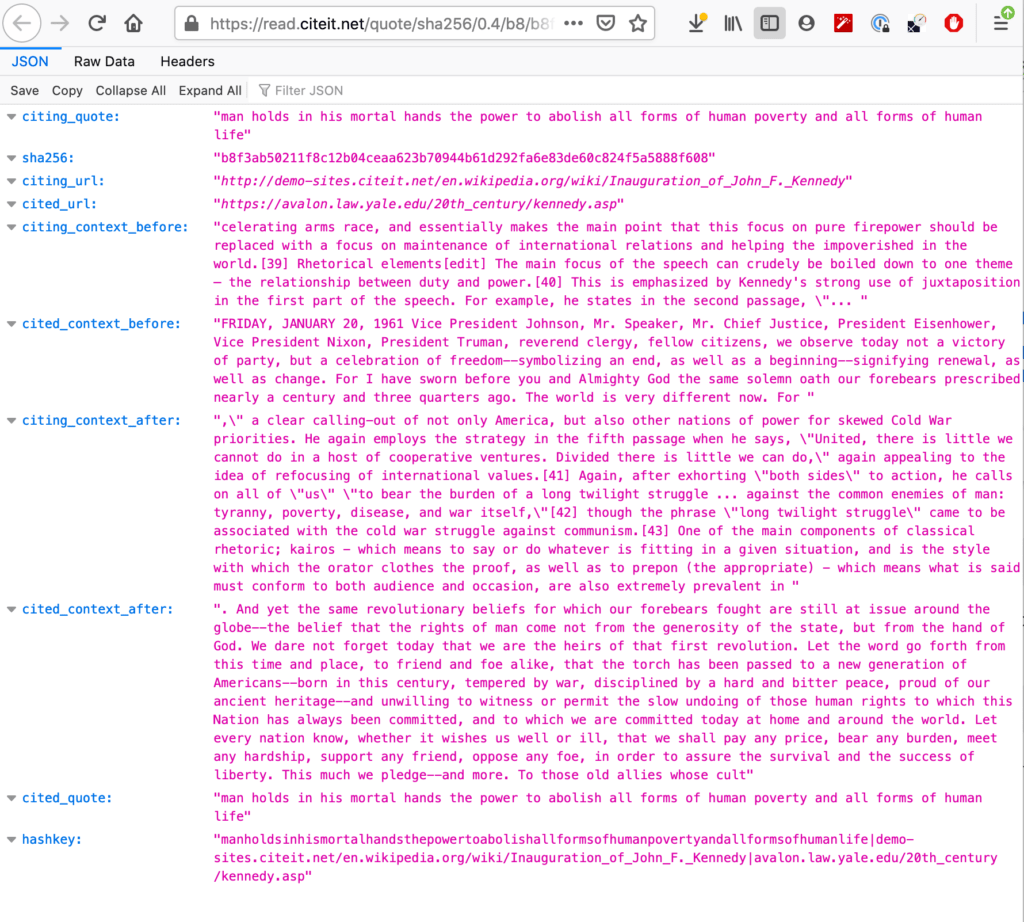
Display the Context to the Reader:
When the Wikipedia reader visits the author’s article, javascript on the (Wikipedia) website directs the reader to load the JSON file that the web service created and displays the surrounding quote context when the reader clicks on an arrow or popup link.
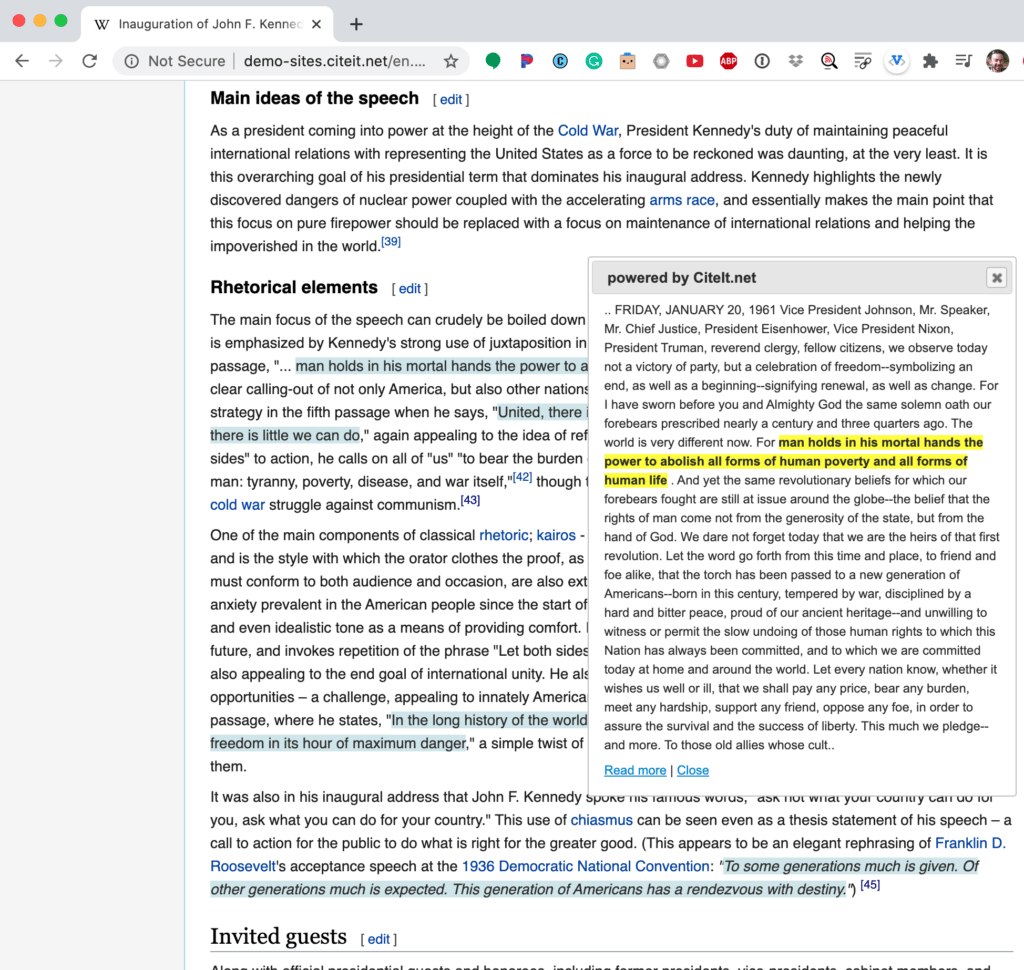
More Information:
You can view more information on my website: www.CiteIt.net and if you want to test-drive the app, you can used the WordPress CiteIt.net plugin to easily create quotations on the demo.CiteIt.net website.
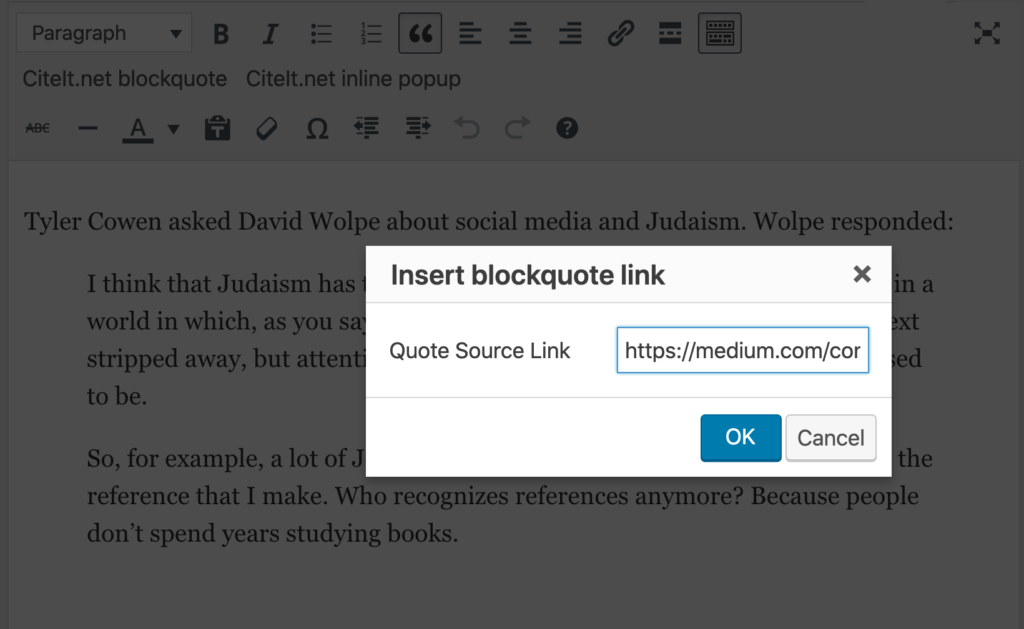
Alpha Code:
The code for this project is alpha-status so don’t be surprised if you find bugs or a lack of polish.
Improving: Building Production-Ready?
I’m interested in exploring whether Wikipedia would have an interest in using my contextual citations idea, in the event that it could be improved and become production-ready.
Volunteer:
Check out the volunteer page if you are interested in helping with the testing or programming; and feel free to drop me an email if you have suggestions.